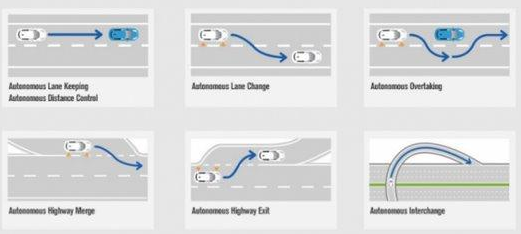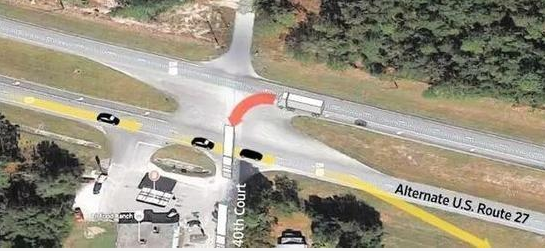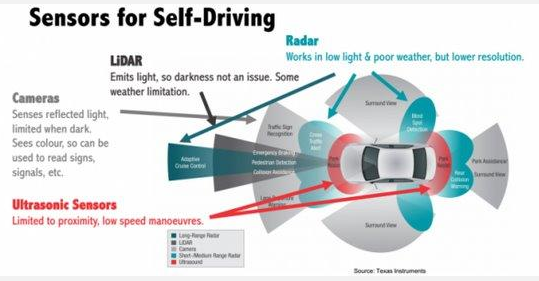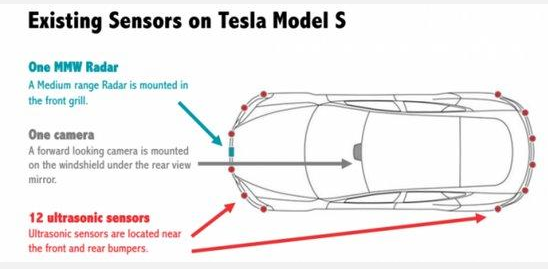"Hypnosis" Tesla, such crazy things, may only be seen in the world's top hacking conference DEF CON. And, yes, it’s a Chinese hacker. Let's talk about Tesla assisted driving (AutoPilot). This system, which makes Elon Musk proud, has been applied on a large scale in Tesla cars around the world. This system can realize automatic follow-up, automatic steering, and even when the traffic jams, it can automatically start and stop repeatedly with the preceding vehicle. To be honest, the availability of the assisted driving system is very high. Many Tesla owners have tried to drive the car to the second ring of Beijing at the morning peak, turn on the auxiliary driving, and close the eyes for half an hour before switching to the manual mode to leave the main road. However, availability and reliability are not so coordinated at certain special moments. At the last moment of this Tesla's life, the assisted driving mode was activated. It is said that the system identified the pure white truck in front of it as a distant building or billboard. Just the first two days, the "first hit" of China Tesla's automatic driving also occurred in Beijing's North Fifth Ring. Frequent crashes at least indicate that there are many design flaws in the assisted driving system. The hackers from China, using actual attack tests, proved that the assisted driving system is far from being "occasional failure". With a little carelessness, it may be exploited by people to launch various "tough" attacks in a planned manner. Liu Jianwei, head of 360 automotive information security team, China Tesla cracked the first person; Yan Yan, Ph.D., Zhejiang University, member of intelligent system security laboratory, famous car hacker. It was they who led the team to launch the Tesla autonomous driving system for the first time in the world. Liu Jianxi gave a detailed introduction to the working principle of the Tesla assisted driving system. All sensors used in automotive autopilot systems, including long-range radar, ultrasonic sensors, visible light sensors, and laser radar. The measurement range, accuracy and effective distance have their own advantages and disadvantages, and are generally used in combination. Tesla's eyes: various types of sensors The first thing to achieve in assisting driving is to recognize the surrounding environment. To achieve this, Tesla chose three different "eyes": Millimeter wave radar: Tesla's radar, with a frequency of up to 77 GHz, is a technology that has been used as a secret technology for the US military and is forbidden to sell to China. Two radars are installed in front of and behind Tesla to detect obstacles at a distance from the front and rear, and to identify obstacles up to 150 meters. Ultrasonic sensor: Tesla is covered with 12-magnet ultrasonic sensors to sense obstacles in the range of about five meters around the body. HD camera: This is the only one of Tesla's "eyes" that can recognize visible light. The camera is placed in front of and behind the car to identify lane markings and road markings such as speed limits and forbidden lines. Liu Jianwei said that the assisted driving system is based on the data collected by these sensors, through the automatic driving algorithm, to achieve all functions such as planning path and automatic cruise. The attack ideas of him and Yan Yan are very clear: as long as these sensors are blacked out and data errors enter the system, it will definitely cause serious attacks. In general, it is "hypnosis" Tesla. Let this world's most advanced self-driving car enter a terrible "nightmare" state. Caption: Location of all sensors on the Tesla body (blue for millimeter wave radar, gray for camera, red for ultrasonic sensor) Aluminum core Solar Cable is a photovoltaic circuit using aluminum as a conductive material. It is widely used in solar power generation systems to transport the electricity generated by solar panels. Aluminum Solar Cable,Photovoltaic Solar Cable,TUV Aluminum solar cable,Aluminum Energy Cable Suzhou Yonghao Cable Co.,Ltd. , https://www.yonghaocable.com



Compared with traditional copper solar cable, aluminum solar cable has some obvious advantages, the most important of which is low cost.
1. Low price: Aluminum is a common metal, and its price is cheaper than that of copper. Therefore, the use of aluminum solar cable can reduce the cost of the system and make the entire photovoltaic power generation project more economical.
2. Lightweight: Aluminum has a lower density and is lighter than copper. The aluminum core optical cable can reduce the weight of the cable and facilitate installation and maintenance.
3. Strong corrosion resistance: Aluminum has good corrosion resistance and can maintain a long service life under harsh environmental conditions. This makes the aluminum solar cable more reliable for outdoor use.
4. Excellent conductivity: although the conductivity of copper is higher than that of aluminum, the aluminum solar cable can make up for the shortcomings of the low conductivity of aluminum to a certain extent by optimizing the design and process and ensure the efficiency and stability of power transmission.
It should be noted that there are also some limitations and precautions for aluminum solar cable. Due to the low conductivity of aluminum, the resistance of the aluminum solar cable will be relatively high, so it is necessary to choose the wire diameter and length reasonably when designing and installing to ensure the efficiency of power transmission. In addition, aluminum is prone to electrochemical reactions when it comes into contact with copper, so corresponding measures need to be taken when connecting aluminum solar cable and other components, such as using special connectors or coating protective layers.
In general, aluminum solar cable with its low cost, corrosion resistance, light and other advantages, has been widely used in solar power generation systems, and brings economic and reliability benefits to photovoltaic power generation projects.